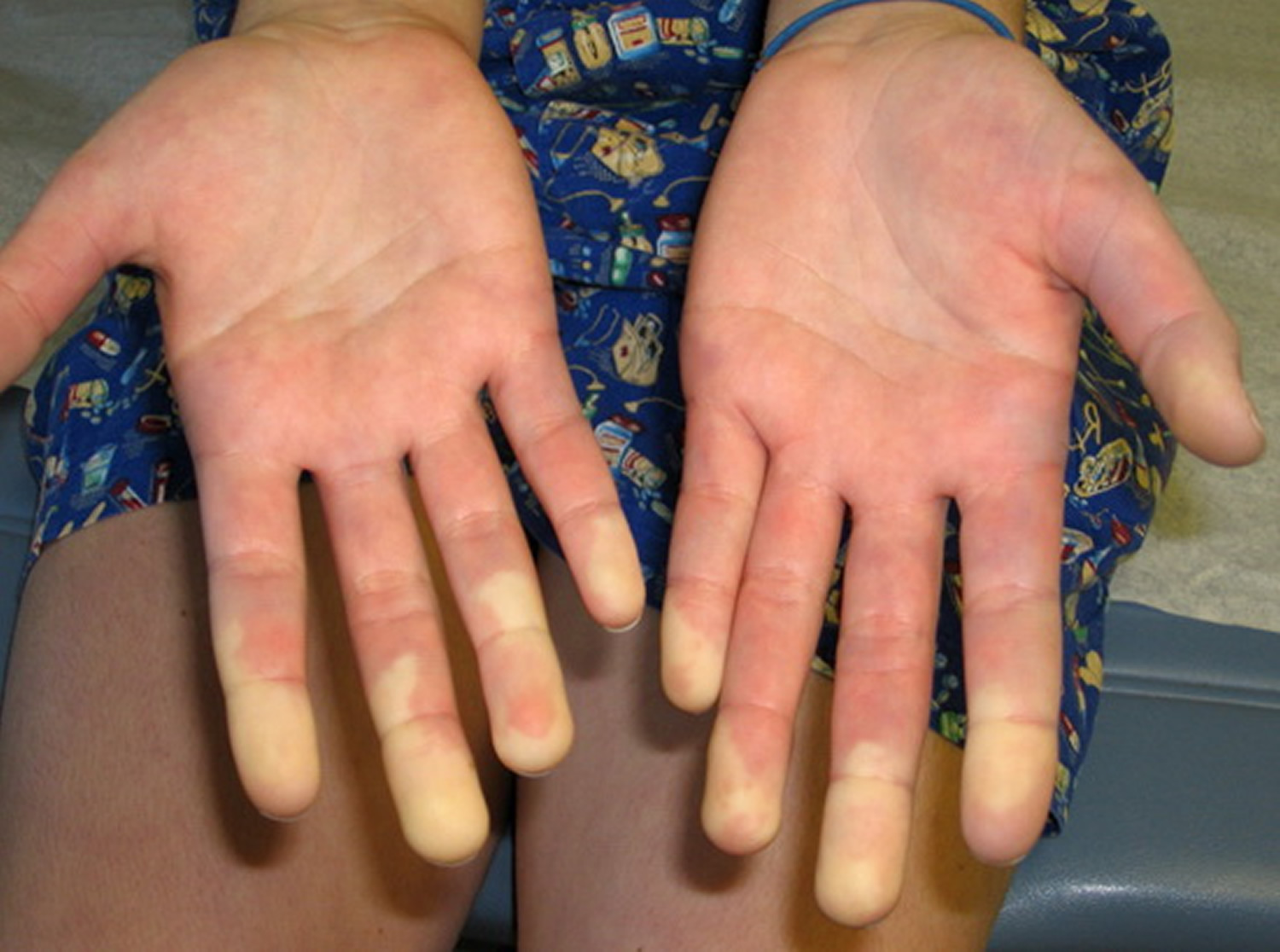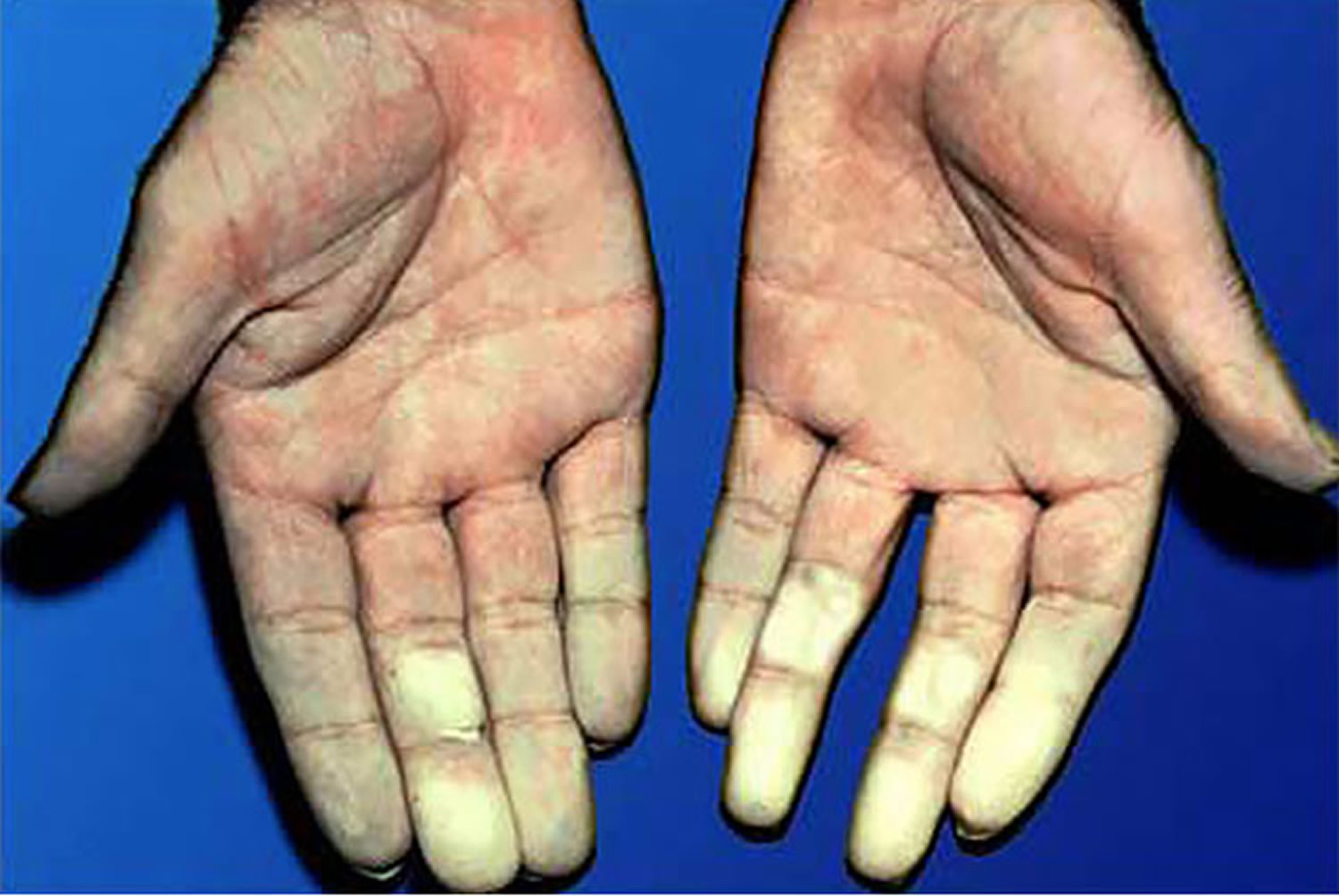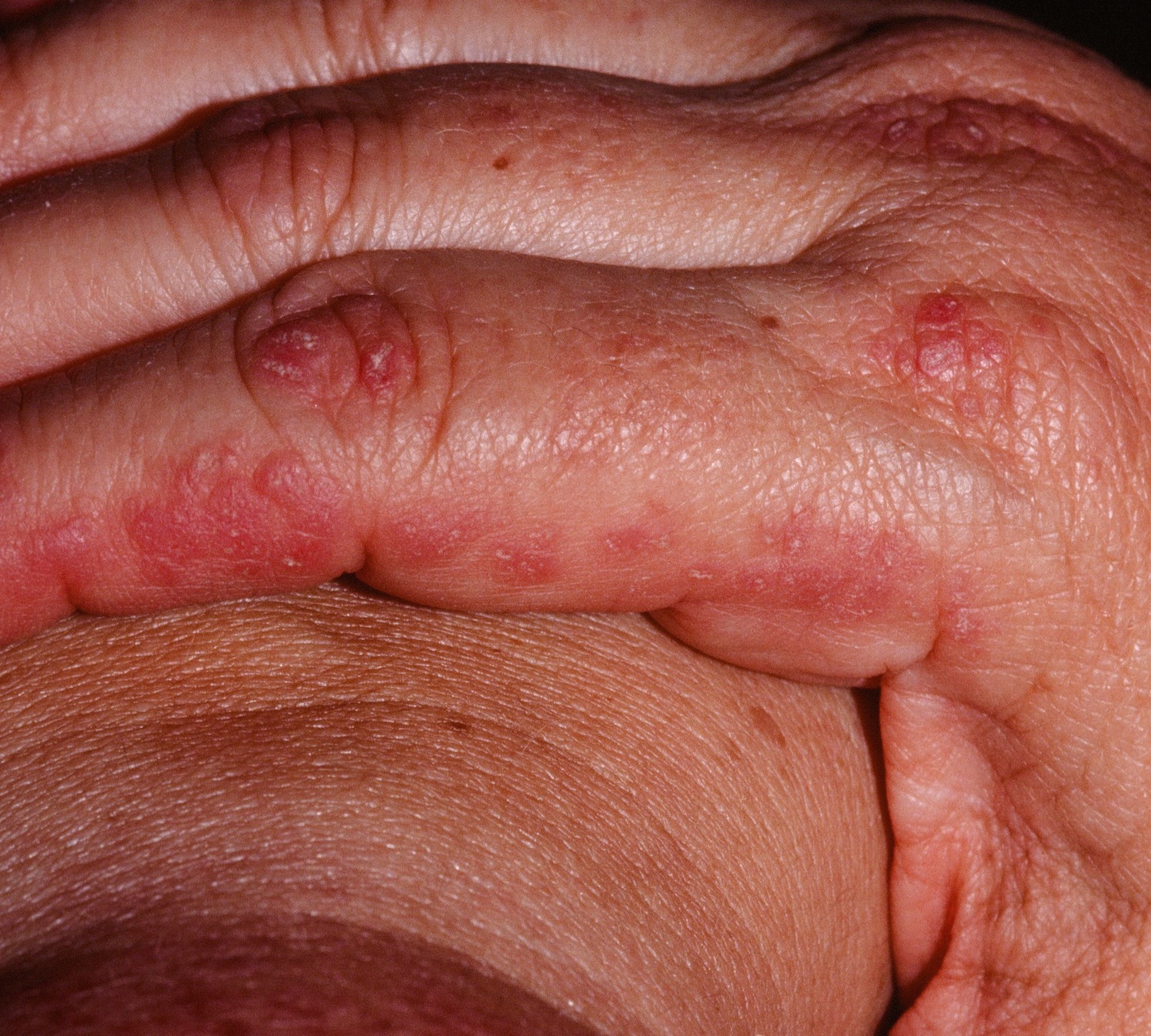Contents
- What is mixed connective tissue disease
What is mixed connective tissue disease
Mixed connective tissue disease is a rare autoimmune disorder that is characterized by features commonly seen in three different connective tissue disorders: systemic lupus erythematosus (SLE), scleroderma, and polymyositis with the presence of a distinctive antibody against what now is known to be U1-ribonucleoprotein (anti-RNP antibodies) 1).
Mixed connective tissue disease is a specific subset of the broader category of rheumatic “overlap syndromes”, a term used to describe when a patient has features of more than one classic inflammatory rheumatic disease. These classic rheumatic diseases include systemic lupus erythematosus (SLE), polymyositis, scleroderma, and rheumatoid arthritis (RA). Individuals with an overlap syndrome may, but need not meet, complete diagnostic criteria for one (or more than one) classic rheumatic disease. Some affected people may also have symptoms of rheumatoid arthritis.
Mixed connective tissue disease has been more completely characterized in recent years and is now recognized to consist of the following core clinical and laboratory features 2):
- Raynaud phenomenon
- Swollen hands
- Arthritis/arthralgia
- Acrosclerosis
- Esophageal dysmotility
- Myositis
- Lung fibrosis 3)
- Pulmonary hypertension
- High level of anti–U1-RNP antibodies (anti-RNP antibodies)
- Antibodies against U1-70 kd small nuclear ribonucleoprotein (snRNP)
In mixed connective tissue disease, the symptoms of the separate diseases usually don’t appear all at once. Instead, they tend to occur in sequence over a number of years, which can make diagnosis more complicated. Early signs and symptoms often involve the hands. Fingers might swell like sausages, and the fingertips become white and numb. In later stages, some organs — such as the lungs, heart and kidneys — may be affected.
Debate exists in the medical literature as to whether mixed connective tissue disease is a distinct syndrome or should be considered a subset of lupus. A minority of authors continue to suggest that mixed connective tissue disease represents subgroups or early stages of disorders such as systemic lupus erythematosus (SLE) or systemic sclerosis, or an overlap syndrome 4). Ciang and colleagues propose that mixed connective tissue disease would more accurately be termed undifferentiated autoimmune rheumatic disease 5).
The onset of mixed connective tissue disease can occur anytime from early childhood to elderly adulthood, but typical age of onset is between 15-25 years old. Approximately 75 percent of individuals are female. The point prevalence of mixed connective tissue disease has been found to be 3.8 per 100,000 adults in Norway, and is felt to be similar in many other parts of the world, though much higher prevalence of mixed connective tissue disease has been noted in some ethnic/geographic groups, notably in Japan. The clinical signs, symptoms and manifestations of mixed connective tissue disease are similar among different ethnic groups. Mixed connective tissue disease is far more common in females than in males. Estimates of the female-to-male ratio vary from approximately 3:1 to 16:1 6), 7).
A population-based study from Olmsted County, Minnesota found that mixed connective tissue disease occurred in about 2 persons per 100,000 per year. Diagnosis was frequently delayed, with a median of 3.6 years elapsing from first symptom to fulfillment of diagnostic criteria 8). A study in American Indian and Alaska Native adults found a prevalence of 6.4 per 100,000 9). A nationwide study of mixed connective tissue disease in Norway found a point prevalence of 3.8 per 100,000 adults and an annual incidence rate of 2.1 per million 10). The prevalence of mixed connective tissue disease in Japan was estimated to be 2.7 per 100,000 11).
Signs and symptoms of mixed connective tissue disease vary but may include Raynaud’s phenomenon; arthritis; heart, lung and skin abnormalities; kidney disease; muscle weakness, and dysfunction of the esophagus. The cause of mixed connective tissue disease is currently unknown.
There is no cure for mixed connective tissue disease but certain medications such as nonsteroidal anti-inflammatory drugs (NSAIDs), corticosteroids and immunosuppresive drugs may help manage the symptoms.
Figure 1. Raynaud’s disease fingers
Figure 2. Scleroderma
Figure 3. Polymyositis – mechanic’s hands
Mixed connective tissue disease prognosis
Most patients with mixed connective tissue disease have a favorable outcome. Cases of mixed connective tissue disease with typical clinical or serologic features occasionally evolve into scleroderma, SLE, or another rheumatic disease.
Pulmonary hypertension is the most common disease-associated cause of death. Careful monitoring and aggressive treatment may improve the outcome of pulmonary hypertension.
Mixed connective tissue disease life expectancy
In general, the long-term outlook (prognosis) for people with mixed connective tissue disease (mixed connective tissue disease) is favorable, but it mostly depends on the signs and symptoms present in each person.
The overall 10-year survival rate of the disease is about 80%. Some people have symptom-free periods lasting for many years with no treatment. Despite treatment, the disease gets worse in about 13% of people and can cause potentially fatal complications in six to 12 years. The prognosis is worse for people with features of systemic sclerosis and/or polymyositis. Pulmonary hypertension is the most common mixed connective tissue disease-associated cause of death.
Long-term outcome studies have established pulmonary hypertension as the most common mixed connective tissue disease-associated cause of death 12). Immunoglobulin G (IgG) anticardiolipin antibodies are a marker for development of pulmonary hypertension. Infections are also a major cause of death.
Cardiac disease, most often pericarditis, is also common in mixed connective tissue disease patients, with prevalence estimates ranging from 13% to 65%. Other cardiac abnormalities include conduction abnormalities, pericardial effusion, mitral valve prolapse, diastolic dysfunction, and accelerated atherosclerosis. In three prospective studies with 13-15 years of follow-up, mixed connective tissue disease patients had an overall mortality rate of 10.4%, and 20% of these deaths were directly attributable to cardiac causes 13).
Mixed connective tissue disease complications
Mixed connective tissue disease can lead to serious complications, including:
- High blood pressure in the lungs (pulmonary hypertension). This condition is the main cause of death in people with mixed connective tissue disease.
Interstitial lung disease. This large group of disorders can cause scarring in your lungs, which affects your ability to breathe. - Heart disease. Parts of the heart may become enlarged, or inflammation may occur around the heart. Heart disease is the cause of death in about 20 percent of people with mixed connective tissue disease.
- Kidney damage. About one-fourth of people with mixed connective tissue disease develop kidney problems. Sometimes, that damage can lead to kidney failure.
- Digestive tract damage. You may develop abdominal pain and problems with digesting food.
- Anemia. About 75 percent of people with mixed connective tissue disease have iron deficiency anemia.
- Tissue death (necrosis). People with severe Raynaud’s phenomenon can develop gangrene in the fingers.
- Hearing loss. Often unrecognized, hearing loss may occur in as many as half the people with mixed connective tissue disease.
Treatment side effects
Corticosteroids are commonly used to manage the signs and symptoms of mixed connective tissue disease. These medications are effective, but they carry risks.
Your doctor will likely monitor you for adverse effects, such as osteoporosis, muscle weakness and infection. You may need to take calcium and vitamin D supplements to help ease these adverse effects.
Mixed connective tissue disease causes
The precise cause of mixed connective tissue disease isn’t known.
Mixed connective tissue disease is an autoimmune disorder. In autoimmune disorders, your immune system — responsible for fighting off disease — mistakenly attacks healthy cells. The anti-RNP immune response that helps define the disease also appears to mediate some of the damage it induces. The RNP molecules are usually in the nucleus of all human cells, where they help to manufacture messenger RNA, and where the immune system cannot find them. However, in dead or dying cells, RNP molecules can become exposed to the immune system. Since RNP molecules are nearly identical in humans to their counterparts in single celled organisms without immune systems, the human immune system can be fooled into responding to RNP as if it were from a dangerous invader.
Some people with mixed connective tissue disease have a family history of the condition. But the role of genetics in causing the disease remains unclear.
Several genes that control the immune system’s responsiveness to invaders and the ability to hide or destroy dead cell debris influence the risk of developing mixed connective tissue disease. Prior immune exposures to other things that look like RNP (such as with prior viral infections or chemicals in the environment) may also increase the risk. Additional effects of heredity and the environment on the risk for developing mixed connective tissue disease and on its manifestations and severity are likely.
Risk factors for mixed connective tissue disease
Mixed connective tissue disease can occur in people of any age. However, it appears to be most common in women under the age of 30.
Mixed connective tissue disease symptoms
Individuals with mixed connective tissue disease have symptoms that overlap with those of two or more connective tissue diseases. These diseases include systemic lupus erythematosus, polymyositis, scleroderma, and rheumatoid arthritis.
Early indications of mixed connective tissue disease can include:
- General feeling of being unwell. This malaise may be accompanied by increased fatigue and a mild fever.
- Cold and numb fingers or toes (Raynaud’s phenomenon). In response to cold or stress, your fingers or toes might turn white and then purplish blue. After warming, the fingers or toes turn red.
- Swollen fingers or hands. Some people experience swelling to the point where the fingers resemble sausages.
- Muscle and joint pain. Joints may become deformed, similar to what occurs with rheumatoid arthritis.
- Rash. Red or reddish brown patches may appear over the knuckles.
- Esophageal hypomotility
- Pulmonary dysfunction
- Myositis
- Leukopenia
- Sclerodactyly
- Pleuritis/pericarditis
- Pulmonary hypertension
A condition known as Raynaud’s phenomenon may precede the development of additional symptoms of mixed connective tissue disease. Raynaud’s phenomenon, which is seen also in scleroderma, is characterized by painfully cold fingers and toes with blue and/or white color changes caused by spasm of blood vessels in the hands and feet in response to cold or stress. It occurs in approximately 90 percent of individuals with mixed connective tissue disease.
Pain in multiple joints (polyarthralgia) or inflammation of joints (arthritis) also occurs in the majority of affected individuals. Lupus-like skin inflammation in sun-exposed areas and hair loss are common, as are skin scarring changes on the fingers and face like those seen in scleroderma. Muscle weakness due to inflammation (myositis) of proximal muscle groups can also occur. Additional frequent symptoms include hand swelling and fatigue.
Dysfunction of the esophagus occurs in at least half of individuals with mixed connective tissue disease. The esophagus is the tube that carries food from the mouth to the stomach. Esophageal trouble most often manifests as heartburn (gastroesophageal reflux) and difficulty swallowing solid foods. Nearly half of individuals with mixed connective tissue disease may develop clinically significant lung involvement, typically sometime after the condition first emerges. mixed connective tissue disease lung disease may lead to breathing (respiratory) difficulties caused either by high blood pressure in the lungs (pulmonary hypertension) or by causing lung inflammation and scarring in and around the air sacs (interstitial lung disease).
Heart (cardiac) involvement is less common in mixed connective tissue disease than lung problems, but can be serious when it occurs.
Kidney (renal) disease occurs much less often in mixed connective tissue disease than in lupus (10 percent of individuals with mixed connective tissue disease) and is often mild in mixed connective tissue disease.
Neurologic abnormalities are noted in approximately 10 percent of individuals with mixed connective tissue disease.
The low levels of circulating red blood cells (anemia) and a reduction in the white blood cell count (leukopenia) occur in 30 to 40 percent of cases. Disease of the lymph nodes (lymphadenopathy), enlargement of the spleen (splenomegaly), enlargement of the liver (hepatomegaly), and intestinal involvement may also occur in some cases.
Although medications may be required to help control mixed connective tissue disease, the condition has been reported to eventually enter sustained remission in as many as 40% of cases.
Among patients with mixed connective tissue disease, patterns of organ targeting have been reported that suggest disease subtypes. Some patients have more vascular manifestations, and have higher risk for pulmonary hypertension. Some patients have more myositis manifestations and have higher risk for interstitial lung disease. Some patients with more classic rheumatoid arthritis manifestations may have a lower risk of major internal organ damage.
The experience with a large single-center cohort of mixed connective tissue disease patients suggests that the following three clinical subclusters of mixed connective tissue disease manifestations may exist 14):
- Predominantly vascular manifestations, including Raynaud phenomenon, pulmonary hypertension, and antiphospholipid syndrome with thromboses (who are at the greatest risk of mortality)
- A polymyositislike picture, including interstitial lung disease, esophageal dysmotility, and myositis
- Erosive polyarthritis with anti–cyclic citrullinated peptide (anti-CCP) antibodies and sclerodactyly
Mixed connective tissue disease diagnosis
Diagnosing mixed connective tissue disease can be difficult because the symptoms of the three diseases usually occur one after another over a long period of time. Doctors may suspect a diagnosis of mixed connective tissue disease after asking questions about the your medical history and performing a physical examination.
Your doctor is likely do these tests:
- Physical exam to check for swollen hands and painful, swollen joints
- Blood tests that reveal abnormally high levels of antibodies to the U1 small nuclear ribonucleoprotein (anti-RNP).
Mixed connective tissue disease treatment
There’s no cure for mixed connective tissue disease. But medication can help manage the signs and symptoms.
Treatment for mixed connective tissue disease depends on which organs are involved and the severity of the disease. Some people need continuous treatment, while others need it only during periods of heightened disease activity, called flares or flare-ups. If you have a more serious form of the disease, you might need continuous medication.
The type of medication prescribed depends on the severity of your disease and your symptoms. Medications can include:
- Corticosteroids. Drugs, such as prednisone, can help prevent your immune system from attacking healthy cells and suppressing inflammation. Side effects can include mood swings, weight gain, high blood sugar, increased blood pressure, weakened bones and cataracts.
- Antimalarial drugs. Hydroxychloroquine (Plaquenil) can treat mild mixed connective tissue disease and might prevent flare-ups.
- Calcium channel blockers. Medications, such as nifedipine (Procardia) and amlodipine (Norvasc), help relax the muscles in the walls of your blood vessels and may be used to treat Raynaud’s phenomenon.
- Other immunosuppressants. Your doctor might prescribe other medications based on your specific signs and symptoms. For example, if they’re similar to those of lupus, your doctor might recommend medications typically prescribed for people with lupus.
- Pulmonary hypertension medications. Bosentan (Tracleer) or sildenafil (Revatio, Viagra) may be prescribed.
Your doctor is likely to monitor you closely for signs of pulmonary hypertension.
Although, no controlled studies have been performed in mixed connective tissue disease, some patients with mixed connective tissue disease have been included in previous trials of lupus, scleroderma, myositis, and rheumatoid arthritis patients. In general, it appears that these mixed connective tissue disease subgroups respond similarly to treatments as have been reported in larger classical rheumatic disease-specific patient cohorts. These observations and accumulated clinical experience by mixed connective tissue disease experts supports the use of antimalarials for potential lupus-like disease modifying effects, the use of vasodilators to treat Raynaud’s phenomenon, the use of proton pump inhibitors for GERD (gastroesophageal reflux disease), and the use of additional disease-modifying anti-rheumatic drugs (DMARDs) for rheumatoid arthritis-like polyarthritis.
Cohort studies of mixed connective tissue disease patients with pulmonary hypertension or other lung disease have suggested that these patients may be more likely to respond well to a course of aggressive immunosuppression than is typical for patients with similar lung disease stemming from other causes.
Low-to-moderate doses of corticosteroids are often effective for rapid control of disease flares, and may be used as part of long-term therapy in some patients, despite their substantial long-term drug toxicities. Scleroderma renal crisis, a serious complication of scleroderma that is more likely after the use of high dose corticosteroids, has been infrequently reported in mixed connective tissue disease.
Nonsteroidal anti-inflammatory drugs (NSAIDs) may also be used to help control mild inflammatory symptoms, though their use must be balanced with their risk for gastrointestinal complications. NSAIDs rarely can cause aseptic meningitis in some individuals; this seems to occur slightly more often in patients with mixed connective tissue disease compared to other groups.
Home remedies
Other ways to control symptoms of mixed connective tissue disease include:
- Nonsteroidal anti-inflammatory drugs. Medications, such as ibuprofen (Advil, Motrin IB, others) or naproxen sodium (Aleve, others), may help relieve the pain and inflammation if your condition is mild.
- Protecting hands from cold. Wearing gloves and taking other measures to keep your hands warm can help prevent Raynaud’s phenomenon.
- Smoking cessation. Smoking causes blood vessels to narrow, which can worsen the effects of Raynaud’s phenomenon.
- Reducing stress. Raynaud’s phenomenon is often triggered by stress. Relaxation techniques — such as slowing and focusing on your breathing — can help reduce your stress levels.
Mixed connective tissue disease diet
Patients with hypertension, esophageal reflux, malabsorption, or other sclerodermatous-type bowel involvement may need special consideration.
Because atherosclerotic heart disease remains a major risk in all patients, advocate a heart-healthy diet. However, no specific dietary manipulations have been demonstrated to be effective in treating mixed connective tissue disease.
Convincing data support the value of an active lifestyle and an exercise program tailored to the needs of patients with arthritis of various types. This approach also appears to be appropriate in mixed connective tissue disease.
References [ + ]








